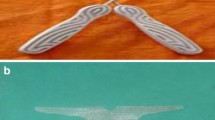Abstract
Introduction and hypothesis
We present our management of lower urinary tract (LUT) mesh perforation after mid-urethral polypropylene mesh sling using a novel combination of surgical techniques including total or near total mesh excision, urinary tract reconstruction, and concomitant pubovaginal sling with autologous rectus fascia in a single operation.
Methods
We retrospectively reviewed the medical records of 189 patients undergoing transvaginal removal of polypropylene mesh from the lower urinary tract or vagina. The focus of this study is 21 patients with LUT mesh perforation after mid-urethral polypropylene mesh sling. We excluded patients with LUT mesh perforation from prolapse kits (n = 4) or sutures (n = 11), or mesh that was removed because of isolated vaginal wall exposure without concomitant LUT perforation (n = 164).
Results
Twenty-one patients underwent surgical removal of mesh through a transvaginal approach or combined transvaginal/abdominal approaches. The location of the perforation was the urethra in 14 and the bladder in 7. The mean follow-up was 22 months. There were no major intraoperative complications. All patients had complete resolution of the mesh complication and the primary symptom. Of the patients with urethral perforation, continence was achieved in 10 out of 14 (71.5 %). Of the patients with bladder perforation, continence was achieved in all 7.
Conclusions
Total or near total removal of lower urinary tract (LUT) mesh perforation after mid-urethral polypropylene mesh sling can completely resolve LUT mesh perforation in a single operation. A concomitant pubovaginal sling can be safely performed in efforts to treat existing SUI or avoid future surgery for SUI.


Similar content being viewed by others
Abbreviations
- SUI:
-
Stress urinary incontinence
- POP:
-
Pelvic organ prolapse
- LUT:
-
Lower urinary tract
- TVM:
-
Transvaginal mesh
- TVT:
-
Transvaginal tape
- PVS:
-
Pubovaginal sling
- UTI:
-
Urinary tract infection
- CTS:
-
Category, time and site
- IUGA/ICS:
-
International Urogynecological Association/International Continence Society
- MAUDE:
-
Manufacturer and User Facility Device Experience
References
Jia X, Glazener C, Mowatt G, Jenkinson D, Fraser C, Bain C et al (2008) Efficacy and safety of using mesh or grafts in surgery for anterior and/or posterior vaginal wall prolapse: systematic review and meta-analysis. BJOG 115:1350
Altman D, Falconer C (2007) Perioperative morbidity using transvaginal mesh in pelvic organ prolapse repair. Obstet Gynecol 109:303–308
Amundsen CL, Flynn BJ, Webster GD (2003) Urethral erosion after synthetic and nonsynthetic pubovaginal slings: differences in management and continence outcome. J Urol 170:134
FDA public health notification (2008) Serious complications associated with transvaginal placement of surgical mesh in repair of pelvic organ prolapse and stress urinary incontinence. Available at: http://www.fda.gov/MedicalDevices/Safety/AlertsandNotices/ucm262435.htm. Accessed 27 July 2012
Hurtado EA, Appell RA (2009) Management of complications arising from transvaginal mesh kit procedures: a tertiary referral center’s experience. Int Urogynecol J Pelvic Floor Dysfunct 20:11
Costantini E, Zucchi A, Lazzeri M, Del Zingaro M, Vianello A, Porena M (2011) Managing mesh erosion after abdominal pelvic organ prolapse repair: ten years’ experience in a single center. Urol Int 86:419
Margulies RU, Lewicky-Gaupp C, Fenner DE, McGuire EJ, Clemens QJ, De Lanceyet JO (2008) Complications requiring reoperation following vaginal mesh kit procedures for prolapse. Am J Obstet Gynecol 199:678
Sweat SD, Itano NB, Clemens JQ (2002) Polypropylene mesh tape for stress urinary incontinence: complications of urethral erosion and outlet obstruction. J Urol 168:144
Terlecki R, Flynn BJ (2010) The use of surgical mesh in incontinence and prolapse surgery: indications for use, technical considerations and management of complications, AUA update Lesson 14, vol 29, 130–139
Haylen BT, Freeman RM, Swift SE, Cosson M, Davila GW, Deprest J et al (2011) International Urogynecological Association; International Continence Society; Joint IUGA/ICS Working Group on Complications Terminology. An International Urogynecological Association (IUGA)/International Continence Society (ICS) joint terminology and classification of the complications related directly to the insertion of prostheses (meshes, implants, tapes) and grafts in female pelvic floor surgery. Neurourol Urodyn 30(1):2–12
Blaivas JG, Jacobs BZ (1991) Pubovaginal facial sling for the treatment of complicated stress urinary incontinence. J Urol 145:1214–1218
Shah KK, Nikolavsky D, Flynn BJ (2013) Bacteriological analysis of explanted transvaginal meshes. Abstract presentation at AUA 2013, San Diego
Hadley DA, Flynn BJ (2011) Surgical algorithm for complex polypropylene mesh complications: recurrent vaginal wall extrusion and urinary tract erosions. Podium presentation, Annual Meeting of the AUA, Washington, D.C, May 2011. Abstract #1874
Padmanabhan P, Hutchinson RC, Reynolds WS, Kaufman M, Scarpero HM, Dmochowski RR (2012) Approach to management of iatrogenic foreign bodies of the lower urinary tract following reconstructive pelvic surgery. J Urol 187(5):1685–1690
Davis NF, Smyth LG, Giri SK, Flood HD (2012) Evaluation of endoscopic laser excision of polypropylene mesh/sutures following anti-incontinence procedures. J Urol 188(5):1828–1832
Roupret M, Misra V, Vaessen C, Cour F, Haertig A, Chartier-Kastler E (2010) Laparoscopic surgical complete sling resection for tension-free vaginal tape–related complications refractory to first-line conservative management: a single-centre experience. Eur Urol 58:270–274
Conflicts of interest
None.
Author information
Authors and Affiliations
Corresponding author
Rights and permissions
About this article
Cite this article
Shah, K., Nikolavsky, D., Gilsdorf, D. et al. Surgical management of lower urinary mesh perforation after mid-urethral polypropylene mesh sling: mesh excision, urinary tract reconstruction and concomitant pubovaginal sling with autologous rectus fascia. Int Urogynecol J 24, 2111–2117 (2013). https://doi.org/10.1007/s00192-013-2146-3
Received:
Accepted:
Published:
Issue Date:
DOI: https://doi.org/10.1007/s00192-013-2146-3




